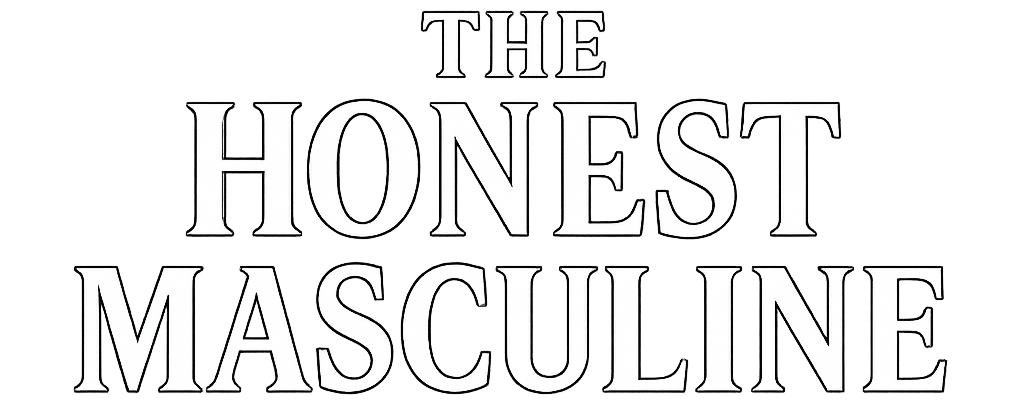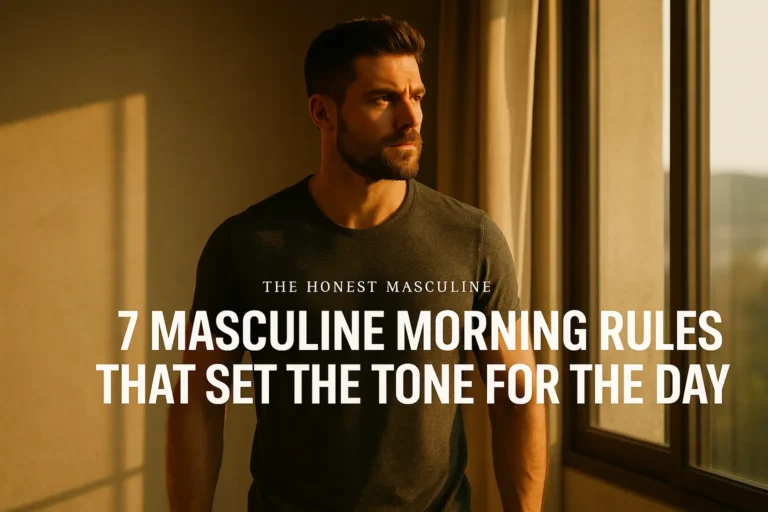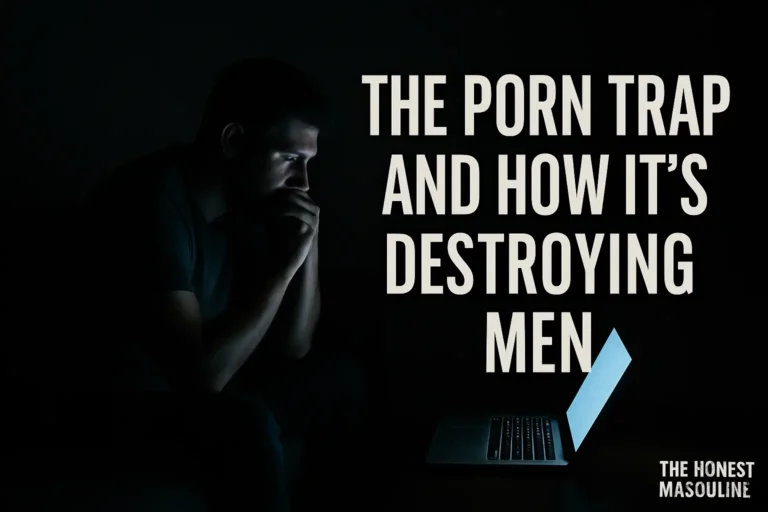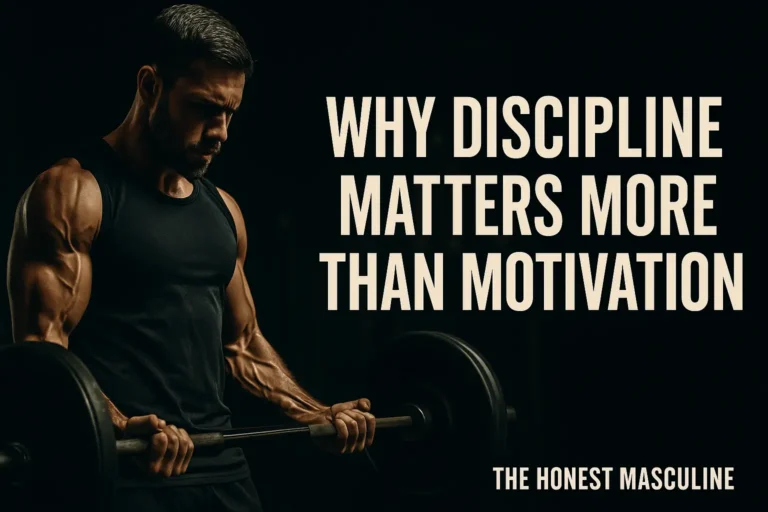
Photo by Tim Marshall on Unsplash
Men are hurting. They’re overextended, isolated and fed a steady diet of toxic extremes—either be a cartoon “alpha” or apologise for your existence. A third way is emerging. It’s called positive masculinity: a movement built on responsibility, resilience and self‑care. This guide unpacks what that means in 2025, why it matters, and how to practice it—minus the fluff.
What is positive masculinity?
Positive masculinity is not a list of traits. It’s a framework built on growth and responsibility. Instead of shaming men for being men, positive masculinity encourages men to develop healthy, prosocial and adaptive behaviourscentreformalepsychology.com. Psychologist Matt Englar‑Carlson describes it as a counterbalance to shame; men move toward what’s possible and healthy rather than away from who they arecentreformalepsychology.com. The focus is on:
- Self‑definition: Men refine and define what being a man means to them, rather than blindly following rigid rolescentreformalepsychology.com.
- Pro‑social orientation: Positive masculinity emphasises empathy, service and responsibility towards otherscentreformalepsychology.com.
- Adaptive strength: It blends courage, restraint, emotional regulation and vulnerability—being strong without being destructive.
Importantly, being male is not a psychological problem; the issue is when cultural expectations encourage aggression, dominance and indifferencecentreformalepsychology.com. Positive masculinity emerges by contrasting those rigid notions and giving men space to grow.
A beacon for men
Positive masculinity acts like a beacon—a destination men can navigate toward. It asks two simple questions: What are you moving towards? and How do you want to contribute?centreformalepsychology.com. That orientation shifts the focus from guilt and avoidance to purpose and action.
Why positive masculinity matters in 2025
Men’s mental‑health crisis
The statistics are brutal.
- 80 % of U.S. suicides are menphillyvoice.com.
- Men die by suicide at roughly four times the rate of womenphillyvoice.com.
- Only around 40 % of men with a recent mental illness received treatment, compared with 52 % of womenhealthforlifegr.com.
- In 2021, 15 % of men had zero close friends, a five‑fold increase since 1990southdenvertherapy.com.
These numbers reveal a crisis of isolation and untreated suffering. Many men avoid therapy because of stigma around appearing weakhealthforlifegr.com. Meanwhile, social media and extremist voices exploit male frustration, promoting hyper‑masculine posturing and blaming women for men’s strugglesphillyvoice.com. Without a new model, men risk oscillating between toxic extremes and victimhood.
The rise of self‑care and a new masculinity
Despite the grim data, attitudes are shifting. A Global Wellness Institute report notes that 95 % of men now prioritise mental health as much as physical healthglobalwellnessinstitute.org. Men’s self‑care has exploded into a $90 billion global marketglobalwellnessinstitute.org. Barbershops, gyms and online communities are transforming into hubs for emotional support and wellnessglobalwellnessinstitute.org. Mainstream media is shining a spotlight on men’s loneliness, career stagnation and mental‑health struggles while also celebrating stories of men embracing therapy and communityglobalwellnessinstitute.org.
This is the opportunity. Positive masculinity fills the void, offering men a model that honours strength and vulnerability, discipline and compassion. It encourages men to see therapy as coaching, self‑care as investment and brotherhood as essential—not optional.
Traits of positive masculinity
Positive masculinity isn’t about perfection; it’s about direction. The traits below aren’t exhaustive, but they capture the ethos:
- Purposeful strength – Courage to protect and provide, directed toward service and community. Strength without dominance.
- Emotional fluency – Ability to recognise, articulate and regulate emotions; using vulnerability as a bridge to deeper relationships.
- Responsible leadership – Leading family and friends through example rather than control; enforcing standards quietly and consistently.
- Boundaries and discipline – Knowing when to say no; protecting time, energy and values.
- Self‑care without shame – Prioritising sleep, movement, therapy and recovery; understanding that self‑maintenance fuels service to others.
- Brotherhood and mentorship – Building male friendships and mentoring younger men; refusing to go it alonesouthdenvertherapy.com.
- Adaptive resilience – Bouncing back from setbacks; staying curious and learning rather than locking into rigid identities.
These traits enable men to engage fully with life—work, relationships, fatherhood—without sacrificing integrity or wellbeing.
The false dichotomy: toxic vs. soft masculinity
Modern media tells men they have two options: be a hyper‑macho aggressor or be soft and agreeable. This is a false choice.
- Toxic influencers—such as certain online personalities—glorify dominance and humiliation, turning male frustration into misogynyphillyvoice.com. Boys are encouraged to seek validation through aggression and to blame women for their problemsphillyvoice.com.
- On the other side, men are told to renounce all ambition and accept emasculation. They’re encouraged to apologise for their existence and retreat from leadership.
Both extremes leave men confused and resentful. The Guardian argues that boys need mentors, not marketers; real men guiding them in the real world, not social‑media charlatanstheguardian.com. Positive masculinity offers this middle path: strength with compassion, ambition with ethics, leadership with humility.
Choosing your influences
The Global Wellness Institute notes that social media fosters both toxic influences and positive support networksglobalwellnessinstitute.org. Men must learn to discern and choose mentors who model responsibility and wellbeing rather than outrage and extremes. This is why in‑person brotherhood—at gyms, community groups and support circles—is so crucial. It grounds men in real relationships and real accountability.
How to cultivate positive masculinity
You don’t become positively masculine by reading a slogan. You practice it. Here’s a blueprint to start today.
1. Build a non‑negotiable training floor
Lift, run, wrestle, play a sport—three sessions a week. Training isn’t just for aesthetics; it regulates the nervous system and builds self‑trust. Book the next 12 sessions into your calendar.
2. Upgrade from coping to caring
Trade numbing behaviours (scrolling, drinking, porn) for restorative habits:
- Sleep 7–8 hours consistently.
- Track one metric (resting heart rate or HRV) to measure stress.
- Finish showers cold for 60 seconds and practise five minutes of slow breathing.
These habits train calm under discomfort and build resilience.
3. Choose therapy like coaching
Therapy isn’t panic repair; it’s a performance plan. Interview three therapists; pick one with a coach‑like approach—clear goals, accountability and homework. Remember that men who view therapy as coaching are more likely to stick with ithealthforlifegr.com.
4. Rebuild brotherhood on purpose
The “friendship recession” shows that 15 % of men have no close friendssouthdenvertherapy.com. Combat isolation by building intentional relationships:
- Text one man you respect: “Coffee next week? Let’s start a monthly check‑in.”
- Join a men’s group, sports team or mastermind.
- Offer mentorship to a younger man; ask mentorship from an older one.
Consistency turns acquaintances into brothers.
5. Lead with standards, not speeches
Your family doesn’t need more monologues; they need your presence and consistency. Set a standard (phone away at dinner, weekly family meeting, shared workouts) and enforce it calmly. Kids copy what you do more than what you say.
6. Stop negotiating with “maybe”
Ambiguity breeds resentment. If someone tells you “maybe later,” read it as a soft no. To cut through mixed signals in dating, use the No‑BS Relationship Translator on this site to decode vague messages and respond with clarity. Boundaries protect both your heart and your time.
7. Replace nice with clear
Clarity is more respectful than niceness. Make clear requests. State clear boundaries. Say clear no’s. You’ll earn more respect and waste less energy.
8. Protect your calendar like oxygen
Time is your most finite asset. Delete three recurring drains. Automate one chore. Outsource one task. A man who defends his schedule defends his life.
9. Use daily reality checks
Habits slip. Standards drift. Use our Harsh Truth Generator to get one blunt truth each day and realign your focus. It’s a reminder to stay on course when complacency creeps in.
Real voices: what young men are saying
To understand the need for positive masculinity, Esquire interviewed twelve ordinary young men across America. Many described feeling angry, lonely and friendless; they’re falling behind women in school and the workplace, delaying marriage and wrestling with debtesquire.com. They said they felt ignored by politicians, forced to keep silent about their struggles and tempted by extreme ideologiesesquire.com. When asked about political choices, some saw support for populist candidates as a way to assert their identity and reclaim respectesquire.com.
These men weren’t whining; they were searching for direction. Their stories highlight the need for models that honour men’s experiences while guiding them toward growth. Positive masculinity isn’t a trend—it’s a lifeline.
FAQ: quick answers
What is positive masculinity?
Positive masculinity is an approach that encourages men to develop healthy, prosocial, adaptive behaviours and defines manhood for themselvescentreformalepsychology.com. It’s a counterbalance to shame and aggression, focusing on responsibility, service and growthcentreformalepsychology.com.
How is positive masculinity different from toxic masculinity?
Toxic masculinity promotes dominance, aggression and suppression of emotion. Positive masculinity integrates strength with empathy, vulnerability and accountability. It empowers men to be strong and compassionate.
Why does positive masculinity matter in 2025?
Men face high rates of suicide and lonelinessphillyvoice.comsouthdenvertherapy.com. At the same time, men are embracing self‑care and prioritising mental healthglobalwellnessinstitute.org. Positive masculinity provides a framework for men to grow amid these challenges and resist toxic influencesphillyvoice.com.
How do I start practising positive masculinity?
Begin with small, consistent actions: build a training routine, set boundaries around work and relationships, seek therapy as coaching, schedule regular time with male friends and mentors, and prioritise self‑care. Use tools like our Relationship Translator to cut through ambiguity and the Harsh Truth Generator to keep your standards sharp.
Sources
- Englar‑Carlson, M. Positive Masculinity: Including Masculinity as a Valued Aspect of Humanity (2019) – explains positive masculinity as a counterbalance to shame and a beacon for healthy male developmentcentreformalepsychology.com.
- Global Wellness Institute, Men’s Wellness Initiative Trends for 2025 – notes that men’s wellbeing is undergoing a profound transformation; 95 % of men prioritise mental health; the men’s self‑care market is worth over $90 billionglobalwellnessinstitute.org.
- Health for Life (2024), Breaking the stigma around men’s mental health – reports that only about 40 % of men with recent mental illness seek treatment and that men die by suicide four times more often than womenhealthforlifegr.com.
- South Denver Therapy, Surprising statistics about couples – reveals that 15 % of men have no close friends, a sharp rise since 1990southdenvertherapy.com.
- PhillyVoice (June 2025), New views on masculinity could propel men to better health – highlights modest progress toward emotional resilience and self‑care while noting resistance and toxic online influencesphillyvoice.com.
- The Guardian (July 2025), The Guardian view on modern masculinity: boys need mentors, not marketers – argues that boys need mentors to model healthy masculinity and warns about harmful social‑media influencerstheguardian.com.
- Esquire (Feb 2025), How Do Young Men See the World? – presents conversations with twelve young men who describe feeling ignored, lonely and politicisedesquire.com.
About the author
Patrick Owens is the founder of The Honest Masculine. He writes blunt, practical essays for men on discipline, relationships, money and purpose. After twenty years of coaching and writing about male psychology, Patrick created tools like the No‑BS Relationship Translator and the Harsh Truth Generator to help men stop guessing and start growing.



